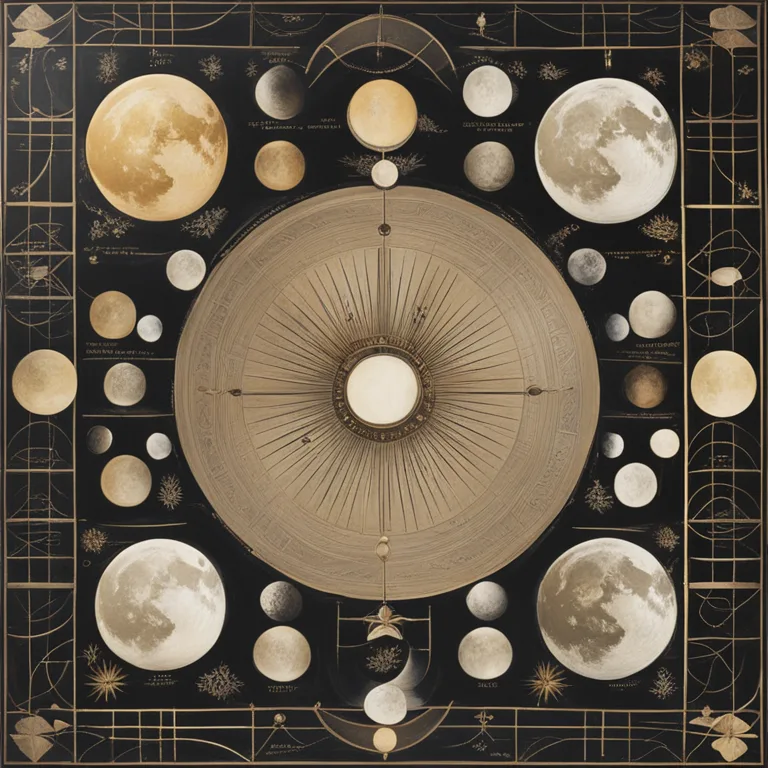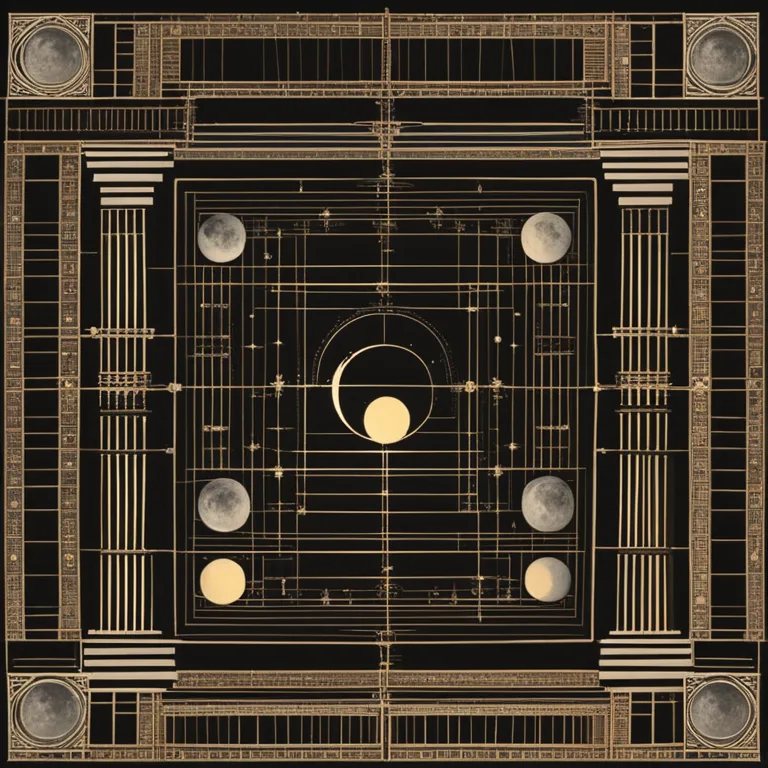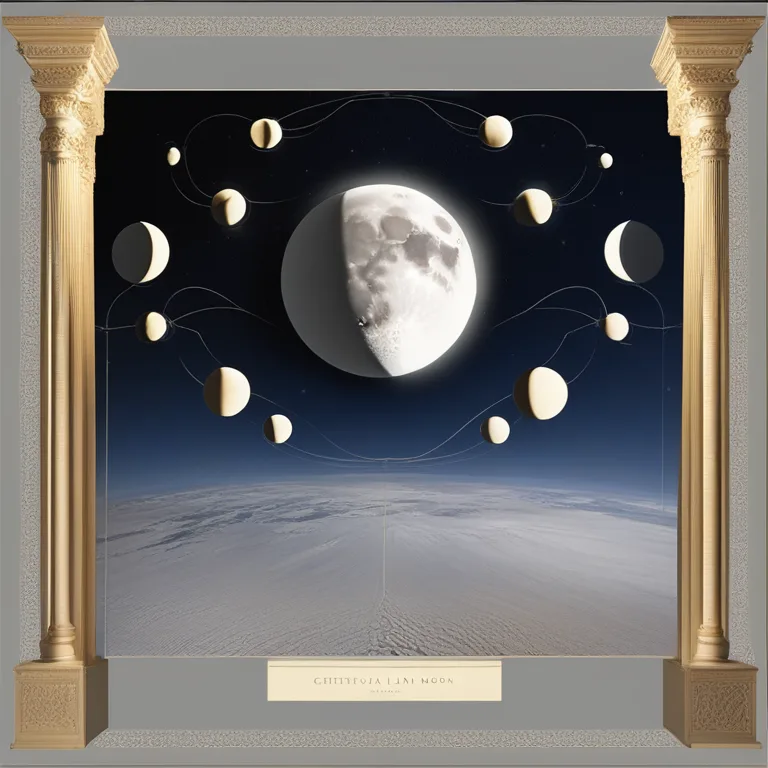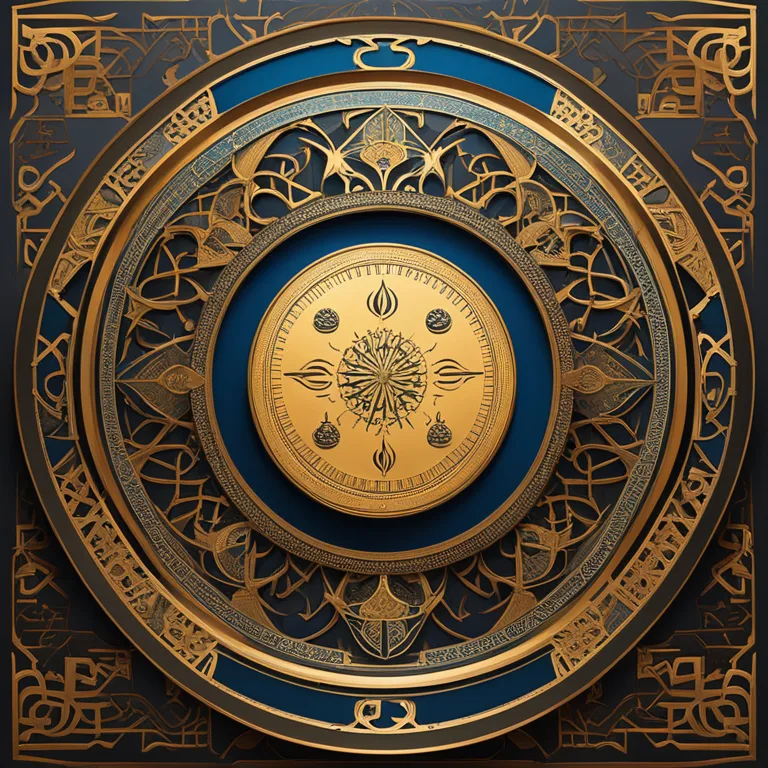
The Mystical Cycle of Moon Phases
Follow the historical journey of the moon's phases and their influence on human civilization through this informative article.
article by Priya Deshmukh
The Celestial Luminary Through Ages
The moon’s cyclical dance through its phases has enraptured humanity since time immemorial. An ever-present symbol in the night sky, the moon’s waning and waxing has served not only as a celestial clock for ancient people but also as a source of inspiration and intrigue. Civilizations, old and new, have studied the changing faces of the moon, weaving its patterns into their cultures and beliefs. From timekeepers to deities, the moon has played myriad roles in the tapestry of human history.

Ancient Moon Phase Observations
Early societies observed the night sky with a keen interest that was both practical and spiritual. The Sumerians and Babylonians meticulously recorded the lunar cycle, relating it to the movements of the heavens and agricultural seasons. Their lunar calendars became the precursors to many modern-time keeping systems. Similarly, the Greeks named the countless craters after their gods and goddesses, while in China, the phases of the moon were linked closely to their festivals such as the Mid-Autumn Festival where the full moon is celebrated.

The Lunar Calendar and its Legacies
As we soared into the Common Era, the lunar calendar's significance persisted. Notably, the Islamic Hijri calendar is based on the lunar cycle, marking important religious observations like Ramadan. Many traditional Eastern calendars also hinge on the moon's journey, dictating the timing of holidays and commemorations. Our very own Gregorian calendar reflects remnants of lunar influence, with months approximating the moon's cycle around Earth.

Moon Phases in Astrology
Astrologically, the moon's phases in 2024 and beyond are believed to symbolize emotional currents and developmental stages in life. The new moon represents new beginnings, an ideal time for initiating projects and setting intentions. The first quarter moon urges decisive action and overcoming challenges. The full moon, radiant in its rounded glory, is often seen as a time for revelations and manifestations. And as the moon wanes towards darkness, it signifies a period for release and reflection.

Modern Perspectives and Lunar Research
Scientifically, the moon phases are a direct result of the moon's orbital mechanics, and yet they still captivate researchers and enthusiasts alike. Current explorations include how the lunar cycle affects the Earth's tides, wildlife behaviors, and even human sleep patterns. Moreover, future missions to the moon, aimed for 2024 and beyond, plan to uncover the mysteries of its South Pole, where sunlight and darkness trade realms in the most dramatic of lunar landscapes.
Cultural Echoes in the 21st Century
Today, the moon continues to hold a prominent place in culture and astrology. Lunar events like eclipses and "Supermoons" draw crowds, reflecting an abiding fascination with Earth's satellite. Astrologers chart the moon's course to predict personal and global trends, while festivals around the world still synchronize with the serene rhythm of lunar phases, proving that this celestial body’s allure is timeless.
Published: 12/22/2023
Modified: 12/22/2023
More predictions
Come back here soon to learn more about yourself and your future


Moon Phases and Soulmate Connection
Discover how lunar cycles may influence soulmate encounters and the intertwining of destinies.


Your Name & Numerology
Discover the mystical connection between your name and numerology to reveal aspects of your personality, destiny, and life path.


The Phases of the Moon: A Complete Handbook
Discover the distinct phases of the lunar cycle and their astrological significance in this comprehensive guide to Moon phases.